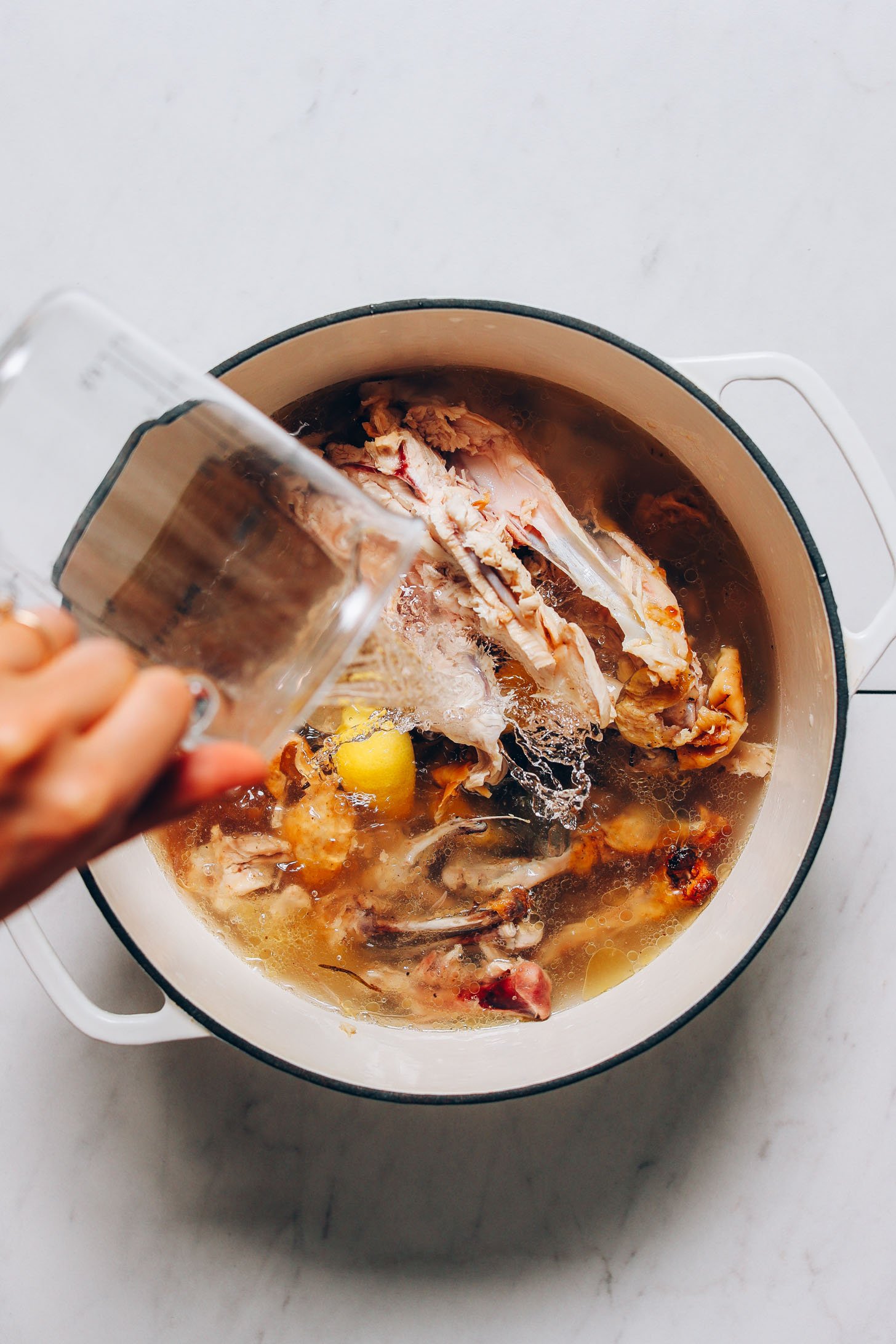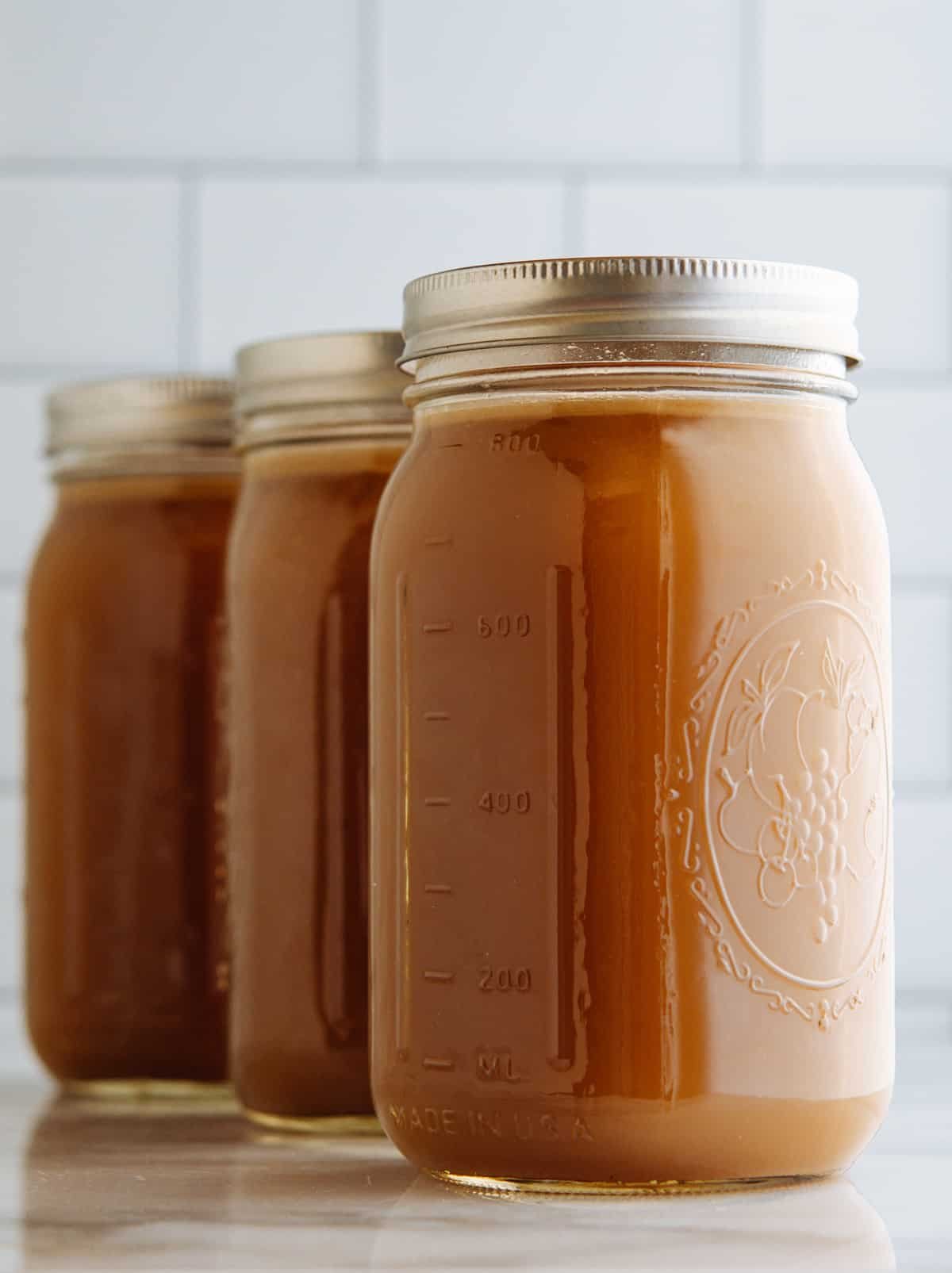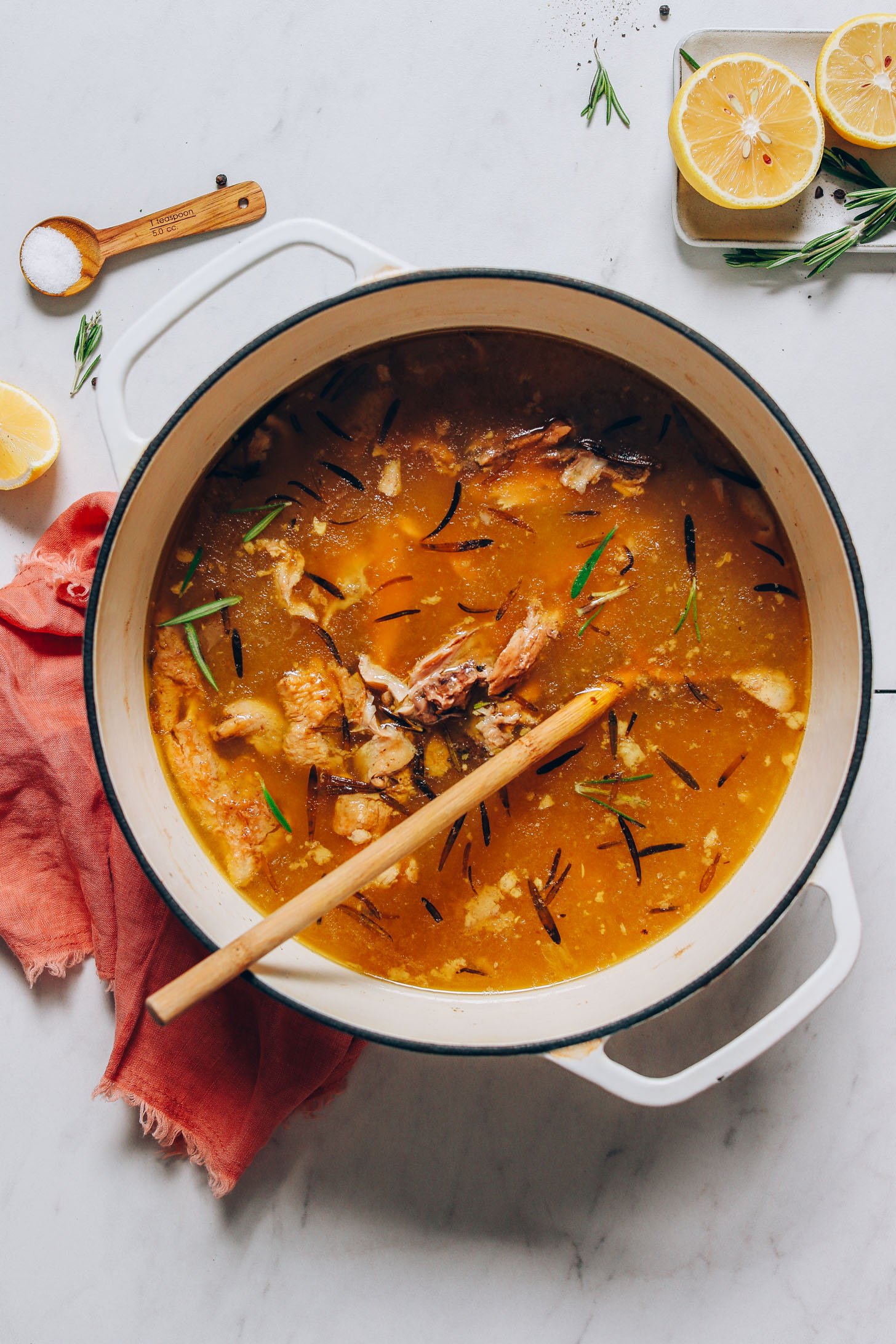Bone Broth: The Ancient Secret to Healthy Gut, Joints, Skin & Immune System
Bone broth is a time-honored tradition that dates back centuries. In ancient cultures, simmering bones and connective tissues was a way to extract every ounce of nutrition from an animal. Today, this tradition remains alive, as bone broth gains popularity in the health and wellness community.
In the old days, many families kept a pot of broth simmering on the hearth. This served as the cornerstone for countless soups and recipes. Moreover, it was a means of preserving the broth before the advent of refrigeration.
Broth vs Stock vs Bone Broth: What’s the Difference?
To better understand bone broth, it's essential to differentiate between broth, stock, and bone broth:
Broth: Broth is usually made with meat and a small number of bones, simmered for a short period, resulting in a light and protein-rich liquid.
Stock: Stock, on the other hand, is made with bones and a small amount of meat. Roasting the bones before simmering enhances its flavor, and it's rich in minerals and gelatin.
Bone Broth: Bone Broth is made primarily with bones and a small amount of meat, often roasted for an extended period. The lengthy cooking process extracts maximum minerals and nutrients, resulting in a broth that's so rich, it causes the bones to crumble when pressed lightly.
How to Make Bone Broth?
Bone broth is remarkably simple to cook. It involves boiling various types of bones (beef, chicken, fish, etc.) in water with the addition of an acid, such as vinegar, and optional spices, vegetables, and herbs. The simmering time can vary from as little as 4 hours to a traditional 48 hours or more.
My Favourite Bone Broth Recipe
To get you started on your bone broth journey, here's a simple recipe to make your very own.
Ingredients
2 KG of ORGANIC beef bones with marrow
4 carrots, chopped
4 celery stalks, chopped
2 medium onions, peel on, sliced in half lengthwise, and quartered
4 garlic cloves, peel on and smashed
1 teaspoon sea salt
1 teaspoon pepper
2 bay leaves
3 sprigs of fresh thyme
5-6 sprigs of parsley
¼ cup of ORGANIC apple cider vinegar
3-4 liters of water
Directions
Place all the ingredients in a crock-pot.
Add water to cover the ingredients.
Turn on the crock-pot and let it simmer for the next 24-48 hours.
Once done, remove from heat and allow it to cool slightly.
Discard the solids and strain the remainder in a bowl through a colander.
Let the stock cool to room temperature, then cover and chill.
Use it within a week or freeze it for up to 3 months.
Health Benefits of Bone Broth
Here's why you should consider incorporating this liquid gold into your diet:
Enhanced Nutrient Absorption: Bone broth is a treasure trove of bio-available nutrients, easily digestible and gentle on the stomach. Its unique amino acid composition and high gelatin content are not only soothing for the gut but also boost the absorption of nutrients from other foods.
Supports Hair, Skin, Nails, and Joints: Collagen, present in bone broth, promotes the health of hair, skin, and nails. Additionally, it contains compounds like glucosamine and chondroitin, which play a pivotal role in joint health.
Collagen Production: The amino acids found in bone broth are essential for collagen production. Collagen is responsible for maintaining smooth and firm skin, reducing wrinkles, and strengthening hair and nails.
Essential Amino Acids: Bone broth is a rich source of several essential amino acids that are often challenging to obtain solely from one's diet. These include proline, glycine, arginine, and glutamine, each playing a unique role in the body's functions.
Gut and Immune Health: With a strong connection between gut and immune health, bone broth is invaluable. Its high gelatin and collagen content support the gut, while amino acids contribute to reducing inflammation.
How to Incorporate Bone Broth into Your Diet?
Bone broth is incredibly versatile and serves as a fundamental ingredient in various culinary applications. Here are some creative ways to use it:
As a Base for Soups and Stews: Start your soups and stews with a hearty bone broth foundation for added depth and nutrition.
Enjoy as a Warm Drink: Sip on bone broth from a mug, just like your favorite tea or coffee, for a soothing and nutritious beverage.
In Gravies and Sauces: Elevate the flavor of your gravies and sauces by incorporating bone broth into the mix.
Cooking Veggies: Use bone broth to cook your vegetables for an extra nutrient boost.
In conclusion, bone broth is a time-honored elixir that offers a plethora of health benefits, from enhancing nutrient absorption to supporting the health of hair, skin, nails, and joints. Whether used as a base for soups, a warm drink, or to cook your favorite veggies, bone broth is a versatile and nutritious addition to your diet. So, embrace this age-old tradition and enjoy the numerous rewards it has to offer.
FAQs
What is bone broth?
Bone broth is a liquid made by simmering animal bones, connective tissues, and vegetables to extract their nutrients, flavors, and collagen.
What are the primary ingredients in bone broth?
The main ingredients in bone broth are bones (often from chicken, beef, or fish), water, vegetables (like onions, carrots, and celery), and various seasonings.
What is the difference between bone broth and regular broth or stock?
Bone broth is typically simmered for a longer period, often 24 hours or more, which results in a richer, more nutrient-dense liquid compared to regular broth or stock.
What are the health benefits of bone broth?
Bone broth is believed to have various health benefits, including supporting gut health, improving skin and hair, and boosting the immune system due to its rich nutrient content.
Is bone broth a good source of collagen?
Yes, bone broth is a natural source of collagen, which can help promote skin elasticity, joint health, and overall connective tissue wellness.
Can bone broth help with weight loss?
Bone broth is low in calories and can be a satisfying, low-fat addition to a weight loss plan, helping to control appetite.
How can I incorporate bone broth into my diet?
Bone broth can be consumed as a hot beverage, used as a base for soups, stews, or gravies, or as a cooking liquid for grains and vegetables.
Is homemade bone broth better than store-bought versions?
Homemade bone broth allows you to control the ingredients and cooking time, often resulting in a more nutrient-rich and flavorful product compared to store-bought options.
Are there any potential side effects or precautions associated with consuming bone broth?
While generally safe, some individuals may need to limit their bone broth intake due to its high purine content, which can be a concern for those with gout.
How long can I store bone broth, and what's the best way to do it?
Bone broth can be stored in the refrigerator for up to 4-5 days or frozen for several months. Proper storage in airtight containers is crucial to maintain freshness.


